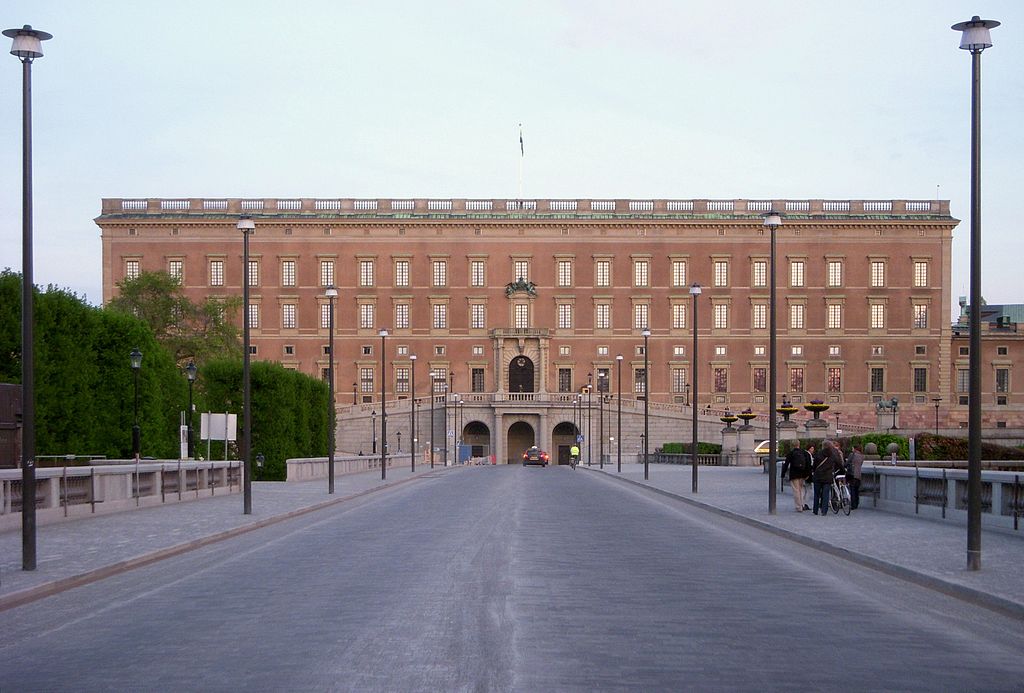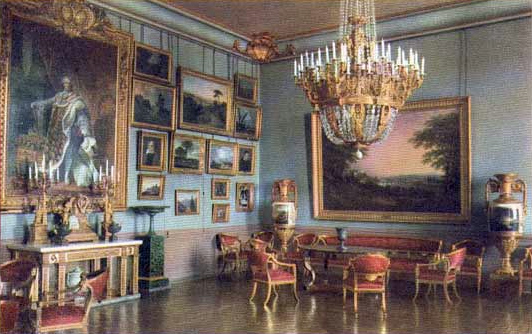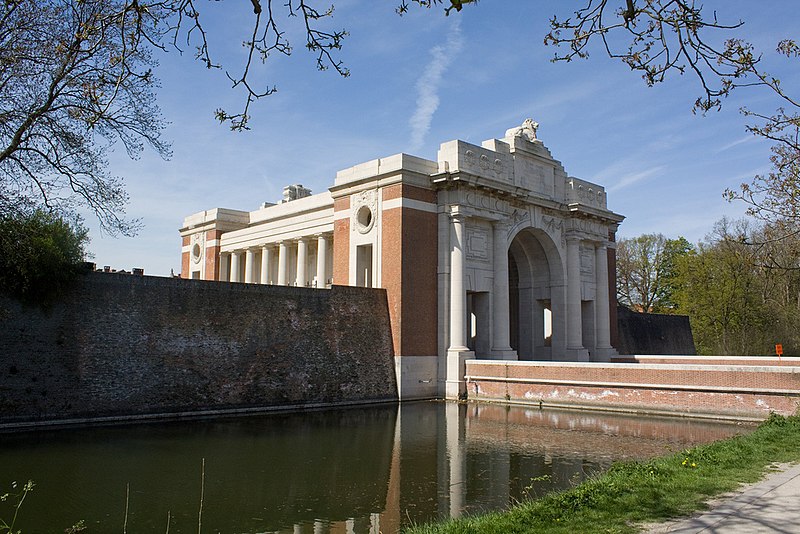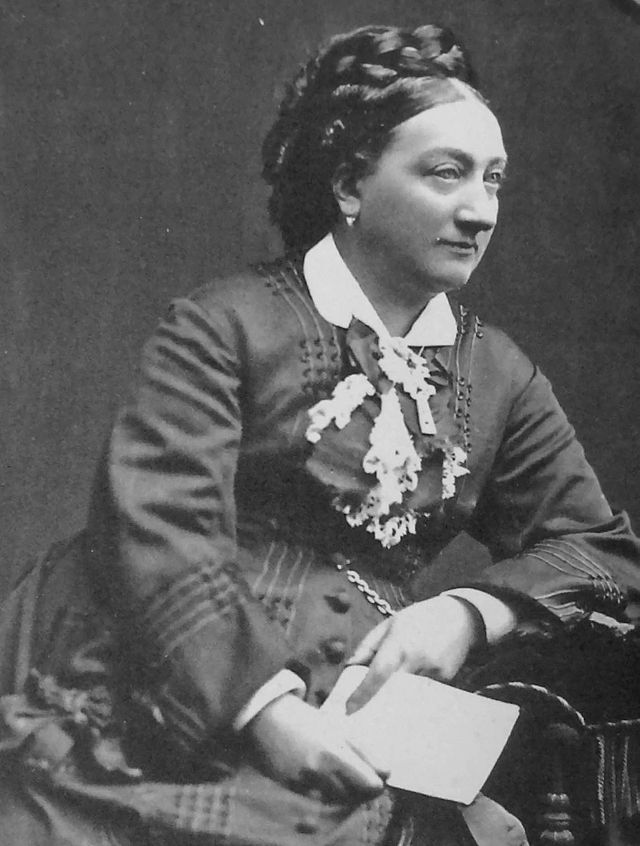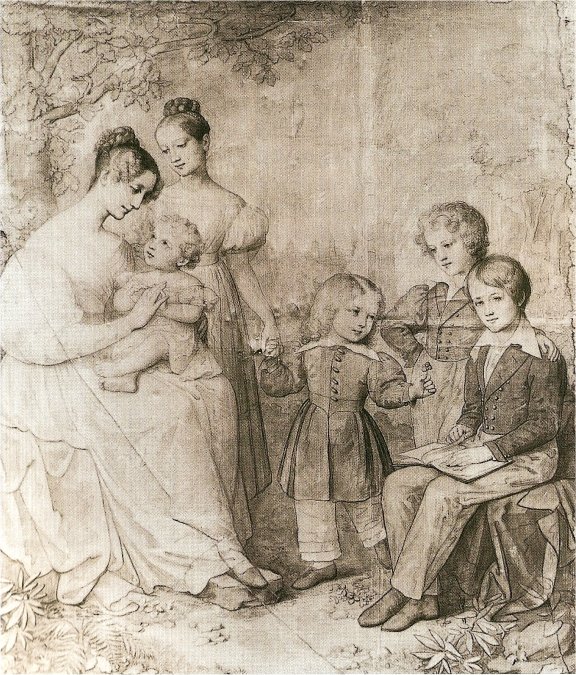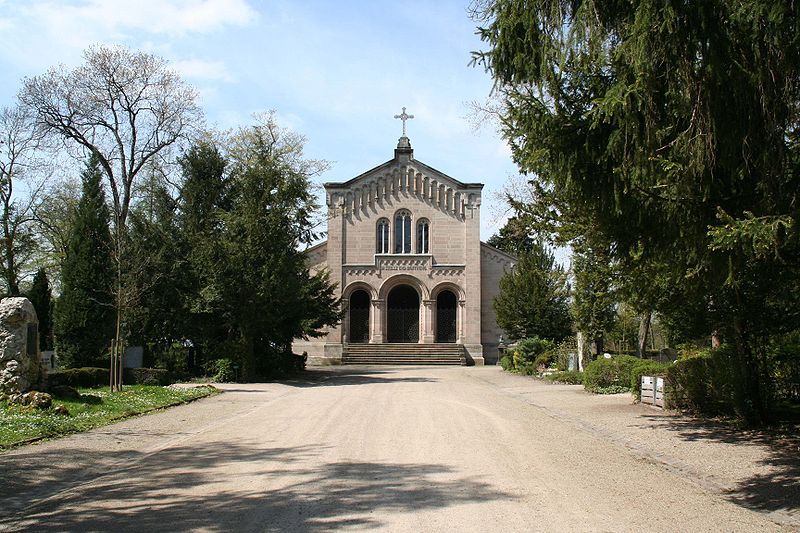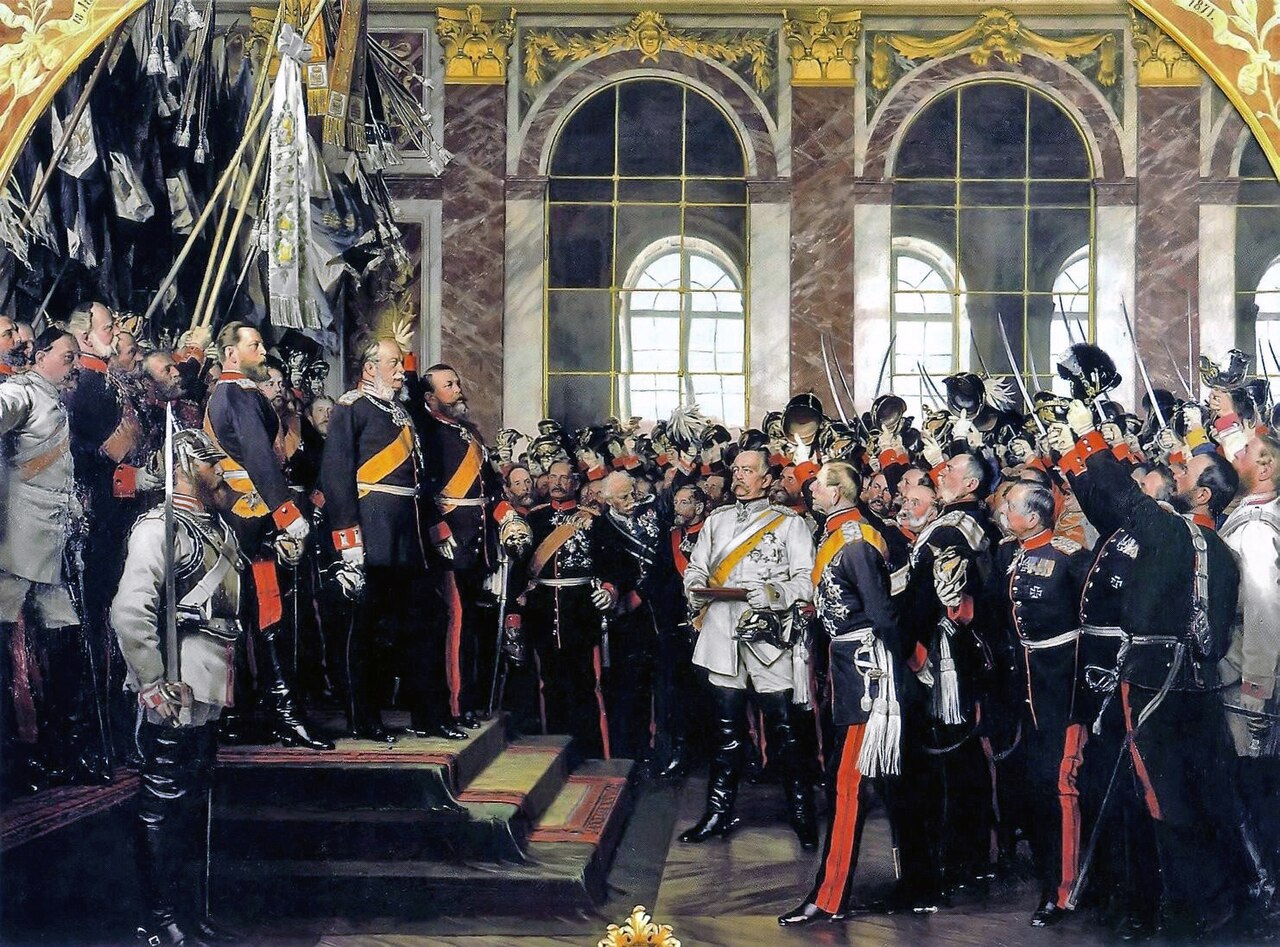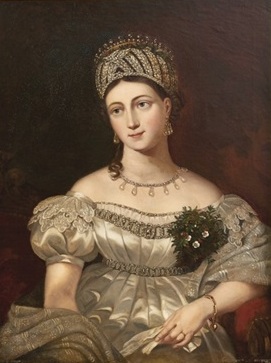by Scott Mehl © Unofficial Royalty 2015
Drottningholm Palace
Drottningholm Palace, on the island Lovön in the lake Mälaren, is the residence of King Carl XVI Gustaf and Queen Silvia of Sweden. The island originally contained a royal estate called Torvesund, in the time of King Gustav Vasa. His son, later King Johan III, built a stone palace for his wife, Catherine Jaggelon, in 1579 and named it Drottningholm. After her death, the King only used Drottningholm occasionally, and it was later owned by several other Swedish Queens. In 1650, it was purchased by Magnus De la Gardie, a prominent Swedish statesman and brother-in-law of King Carl X Gustav. He, in turn, sold it to Queen Hedvig Eleonora in 1661 but the castle was destroyed by fire later the same year. Queen Hedvig Eleonora engaged famed Swedish architect Nicodemus Tessin the Elder (and later his son) to rebuild the palace in the design that we know today. For the next hundred years, it served as a regular royal residence for successive sovereigns. In 1744, it was given to the future Queen Louisa Ulrika when she married the future King Adolf Fredrik. The couple resided through their reign, and a few years after her husband’s death, Louisa Ulrika sold the palace to the Swedish state.
The palace was used less often over the next years and was empty for much of the 19th century. In 1846, King Oscar I began making repairs to the palace which was in danger of being torn down. His son, Oscar II continued with repairs. It was Oscar II’s son, King Gustav V, who in 1907 began a massive renovation project of the palace, which would take four years. Gustav V is credited with restoring the palace to its former glory, having removed much of the more ‘modern’ style put in place by his father and grandfather. By 1911, the palace had returned to royal use and has remained a royal residence ever since. In 1981, King Carl XVI Gustaf and Queen Silvia moved from their apartments in the Royal Palace of Stockholm and made Drottningholm their primary residence, living in the southern wing of the palace.
In 1991, The Royal Domain of Drottningholm – including the palace, outbuildings, and grounds – was named a UNESCO World Heritage Site. It was the first such site in Sweden.
The main block of the palace is flanked by two large wings, which surround inner courtyards. The southern wing contains the private residence of King Carl XVI Gustaf and Queen Silvia and is not open to the public.
Some of the notable rooms in the palace are:

Hedwig Eleonora’s State Bedchamber, 1966. source: Wikipedia
Hedvig Eleonora’s State Bedchamber is located on the first floor of the palace and formed the main room of the State Rooms at the time. Despite its name, Hedvig Eleonora never actually used the room, instead, living in more private rooms in the southern wing of the palace.

The Ehrenstrhal Salon, 1966. source: Wikipedia
The Ehrenstrahl Salon was previously known as the Large Audience Room and is situated right next to Hedvig Eleonora’s State Bedchamber. It takes its name from the artist David Ehrenstrahl, who painted six large murals for the room which depict important events in the history of the royal family. More of his work also adorns the ceiling in the room.

The Palace Library. source: Wikipedia, Holger.Ellgaard
The Palace Library is found in the northern wing of the palace, overlooking the gardens. Originally a picture gallery, it was converted into a library by Queen Hedvig Eleonora in 1760, to house her extensive collection of books.

Carl X Gustav Gallery. source: Wikipedia
Carl X Gustav Gallery, on the first floor of the palace, was designed by Queen Hedvig Eleonora as a tribute to her late husband, King Carl X Gustav. The gallery contains paintings depicting the King’s military career.

Carl XI Gallery. source: Wikipedia, Holger.Ellgaard
On the second floor, directly above the Carl X Gustav Gallery is the Carl XI Gallery. This gallery contains paintings illustrating the military career of King Carl XI which was completed in 1695.

The Stone Hall, c1899. source: Wikipedia
The Stone Hall was originally Hedvig Eleonora’s dining room and takes its name from the stone floor. Today, it is part of the Royal Family’s private apartments and has occasionally been seen in personal photos released by the royal family for Christmas and birthday celebrations.

The State Hall. source: Wikipedia, Holger.Ellgaard
Directly above the Stone Hall is the Hall of State. It has often been called the Contemporary Hall after the large portraits of other European sovereigns from the time of King Oscar I. Queen Josefina had arranged for many of these portraits to be painted and upon receiving them, gave them all to the Swedish state. Today the room is used primarily for official functions.

The Porcelain Room. source: Wikipedia, Holger.Ellgaard
The Porcelain Room was designed by King Oscar II to display his large collection of faience from the 1700s. The room was completed in 1897, as a gift to the King from the palace staff.

The Palace Church (Slottskyrkan), 2011. source: Wikipedia, ArildV
The Palace Chapel is on the northern end of the palace and serves as the Lovö parish church. Construction began in 1696 and was completed in 1728. After several renovations, the church reopened in 1746 and has been in continuous use ever since. It has also been the site of many royal christenings.
The Palace Grounds
Just next to the southern wing of the palace is the Lake Wing (Sjoflygeln), which was the residence of Crown Princess Victoria prior to her marriage. Prince Daniel also lived at Drottningholm prior to marrying Victoria. He rented an apartment in the Page Building (Pagebyggnaden), just meters from Victoria’s home. In April 2016, Prince Carl Philip and Princess Sofia took up residence in Sjoflygeln, while major renovations were being done to their home, Villa Solbacken.

The Baroque Gardens. source: Wikipedia, Hedwig Storch
The palace grounds include a stunning baroque garden on the western side of the palace, developed under Queen Hedvig Eleonora in the late 1600s. These gardens feature numerous sculptures and statues, along with several fountains and water features.

The English Gardens. source: Wikipedia, Holger.Ellgaard
Just north of the Baroque Gardens, King Gustav III designed a large area of the park as an English garden, with two ponds, bridges, and walking paths. The English Gardens feature many statues collected by King Gustav III from Italy.
Other buildings on the grounds of Drottningholm Palace include:
Located just north of the palace is the Drottningholm Palace Theatre. The current theatre was built at the direction of Queen Hedvig Eleonora, to replace the previous building which had been destroyed by fire in 1762. It formally opened in 1766. It was used extensively by King Gustav III but was then closed after his assassination. For many years it was used only occasionally and began to fall into disrepair. The theatre underwent a complete restoration and formally re-opened in 1922, and is now managed by a private foundation.
In front of the theatre is Theatre Square, which is flanked by four pavilions. These contain private apartments as well as the Theatre gift shop.
The Chinese Pavilion was originally built as a surprise birthday gift for Queen Louisa Ulrika in 1753. Unfortunately, the hastily constructed building could not stand up to the harsh Swedish weather. By 1763, it was deemed necessary to take the building down and rebuild it. The current structure was completed in 1769 and is surrounded by several pavilions which served as additional rooms.
Near the Chinese Pavilion is the Guards Tent, which was built in 1781-1782 to accommodate the Chinese Pavilion Guards. It was later used for storage for many years, and after a major renovation in the 1990s, serves as an exhibition space and part of the palace tours.
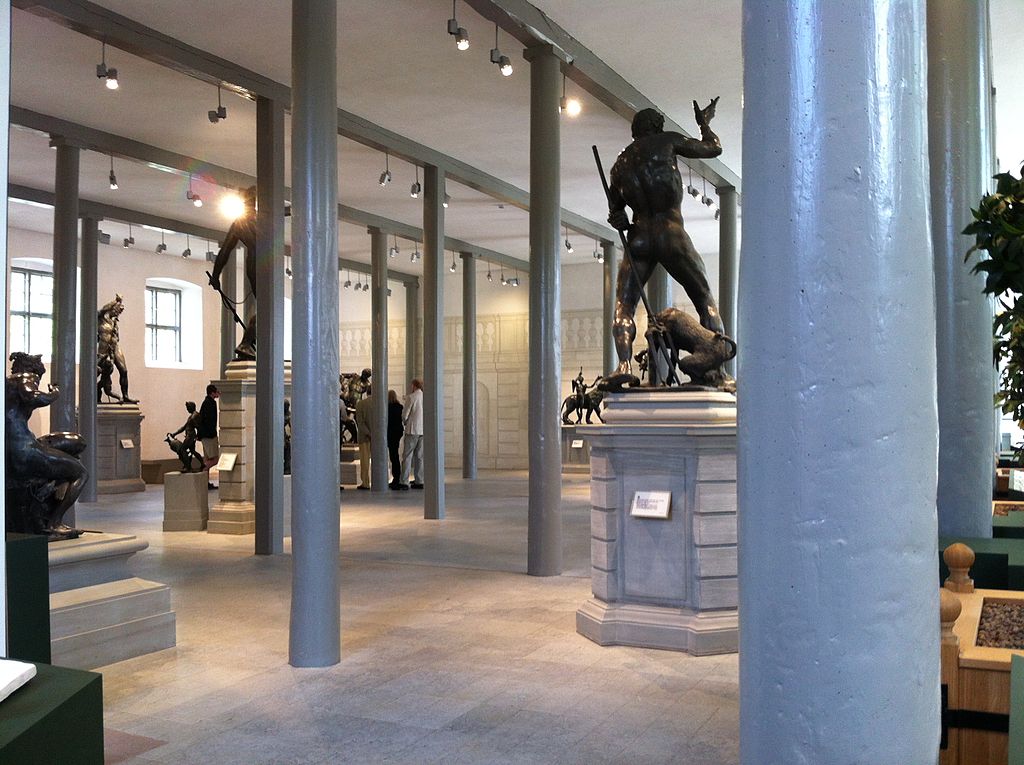
Interior of the Museum de Vries. source: Wikipedia, Bengt Oberger
The Museum de Vries is a collection of statues by the artist Adriaen de Vries. In addition to those in the museum, several of his works are featured in the Baroque Gardens. The museum is housed in the Dragon Stables, formerly the stables for the Life Regiment Dragoons. It was later used to house around 250 sheep, which were used to maintain the grounds of the palace until the 1950s. For the next 40 years it was used by the Royal Collection, and since 2001 has held the Museum de Vries.

Evert Lundquist’s Studio. source: Wikipedia, Holger.Ellgaard
Located at the southern end of the palace grounds is Evert Lundquist’s Studio Museum. Mr. Lundquist was a painter and graphic artist who used this building as his studio from 1953 until 1990. Per the artist’s wishes, the studio was opened as a museum in 1993 and remains a popular site on the palace grounds. Artwork by Mr. Lundquist and his wife (artist Ebba Reutercrona) and their two sons are showcased.
Learn more about the other Swedish Royal Residences here!
This article is the intellectual property of Unofficial Royalty and is NOT TO BE COPIED, EDITED, OR POSTED IN ANY FORM ON ANOTHER WEBSITE under any circumstances. It is permissible to use a link that directs to Unofficial Royalty.







